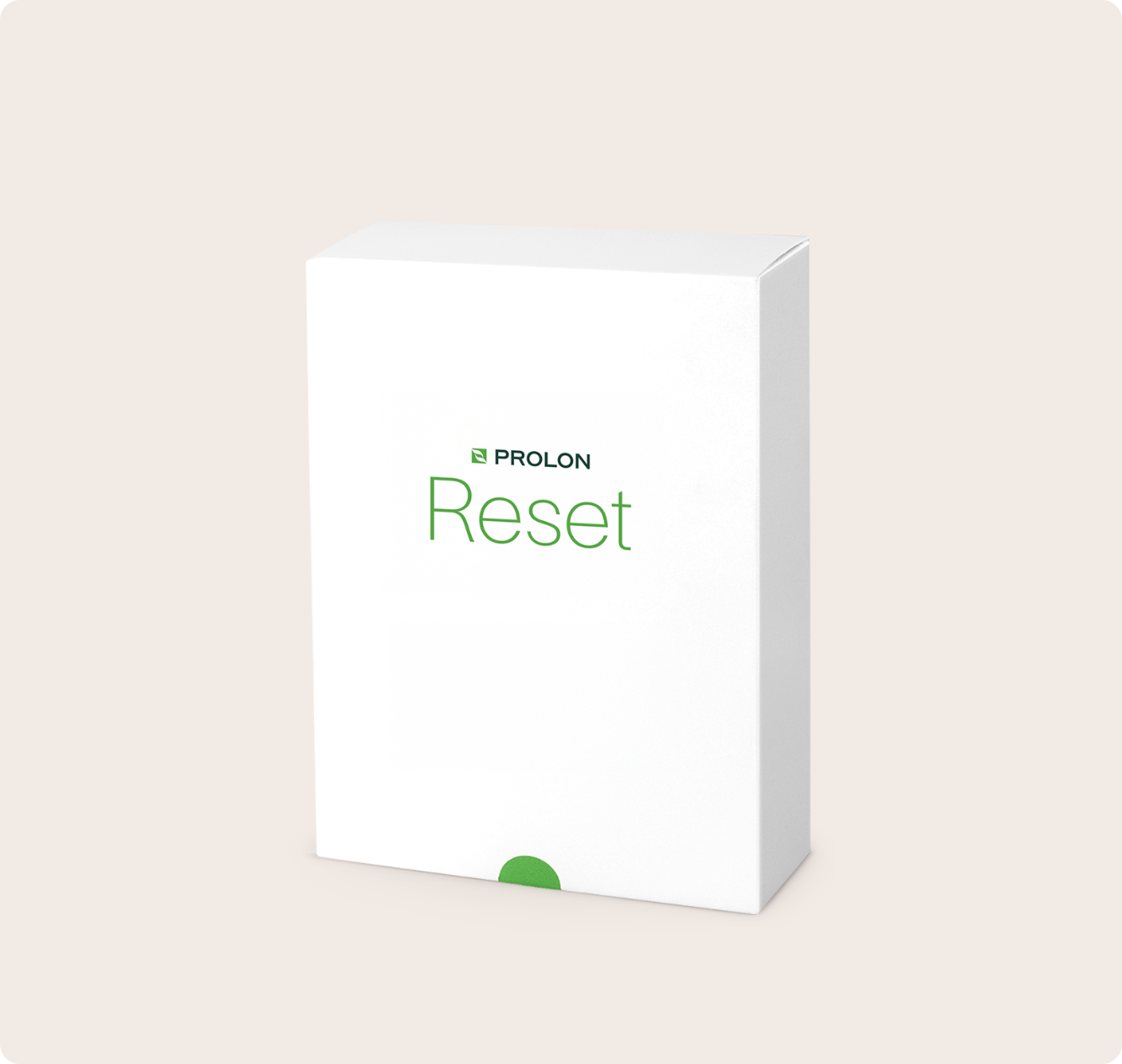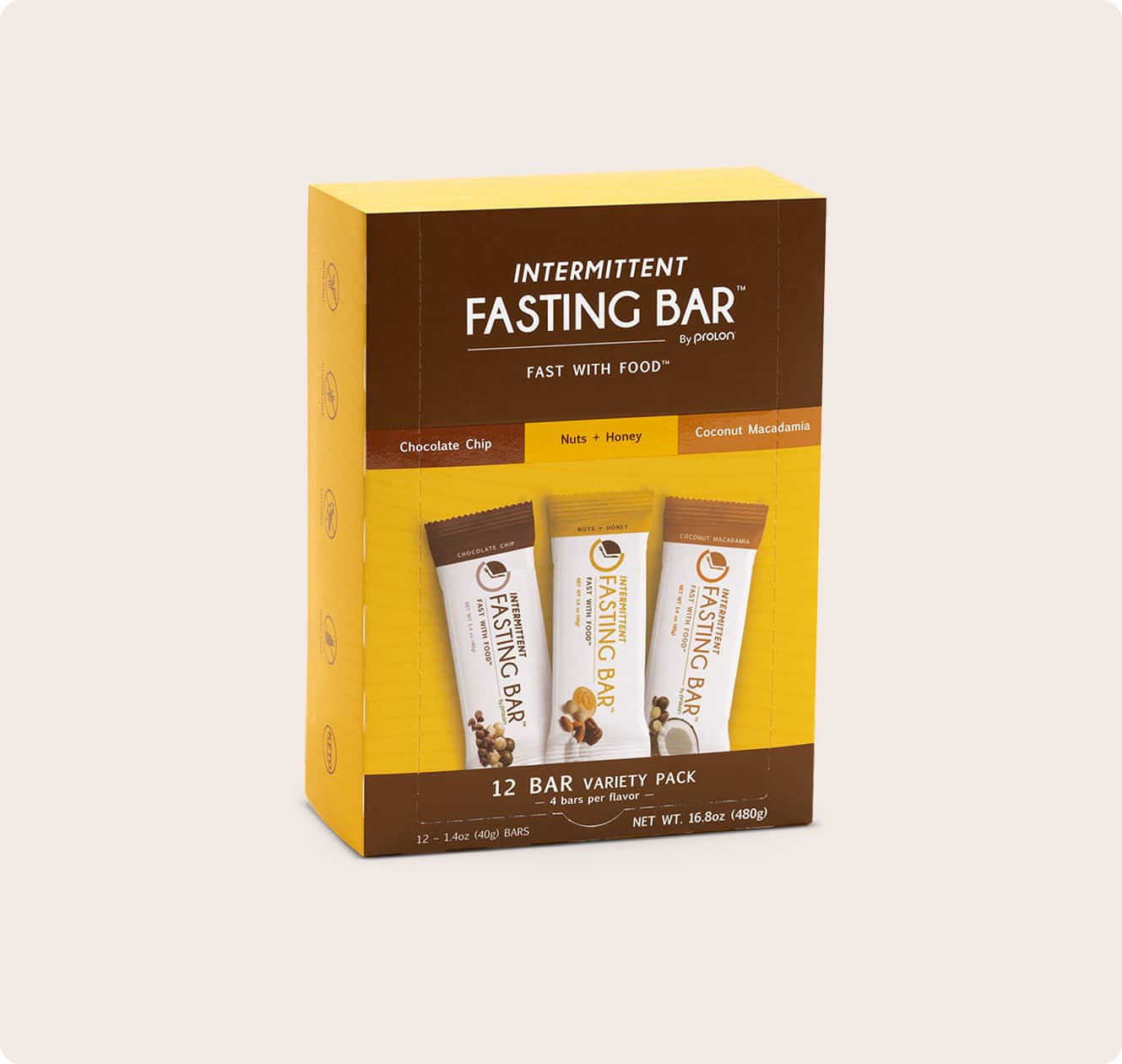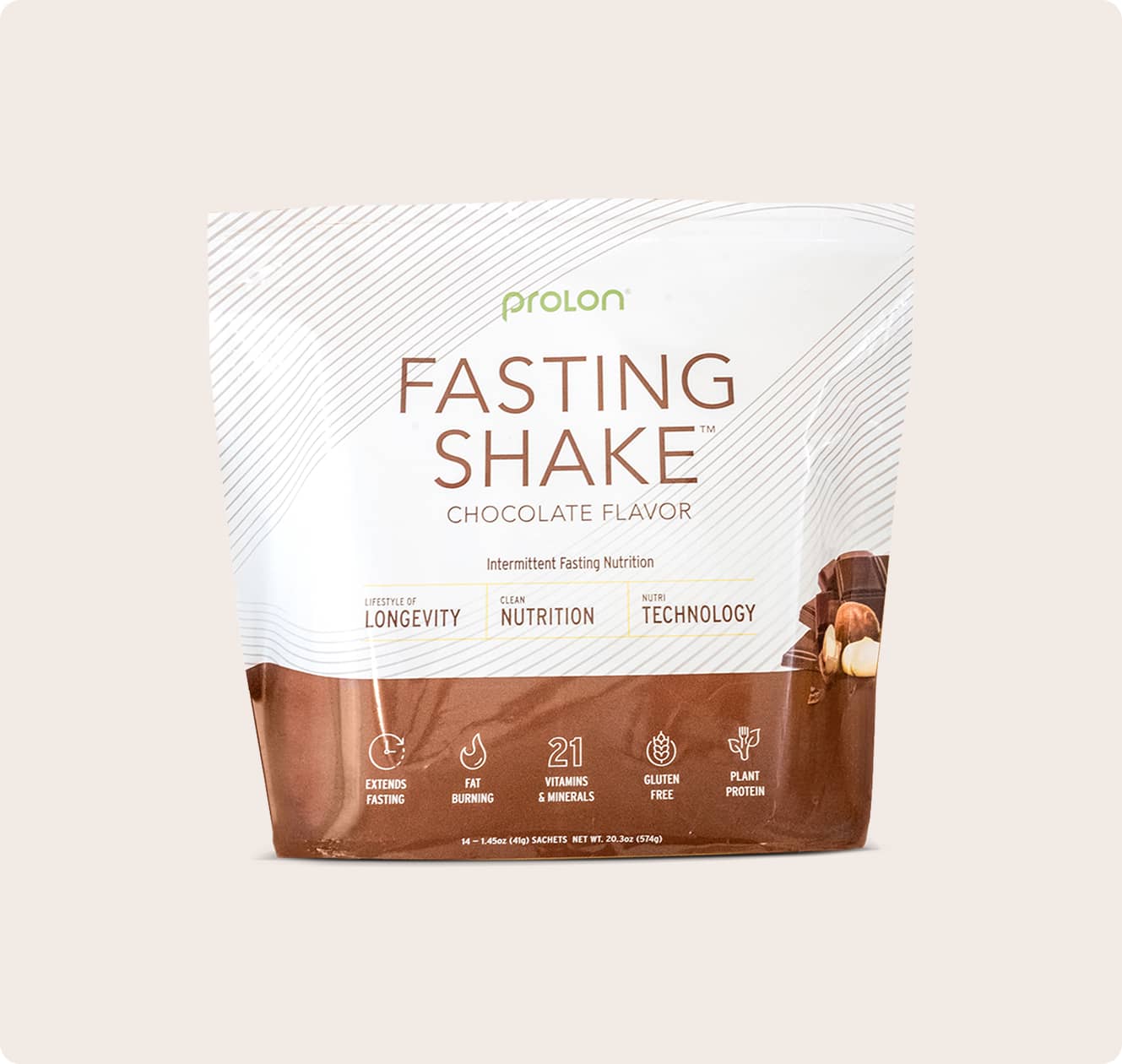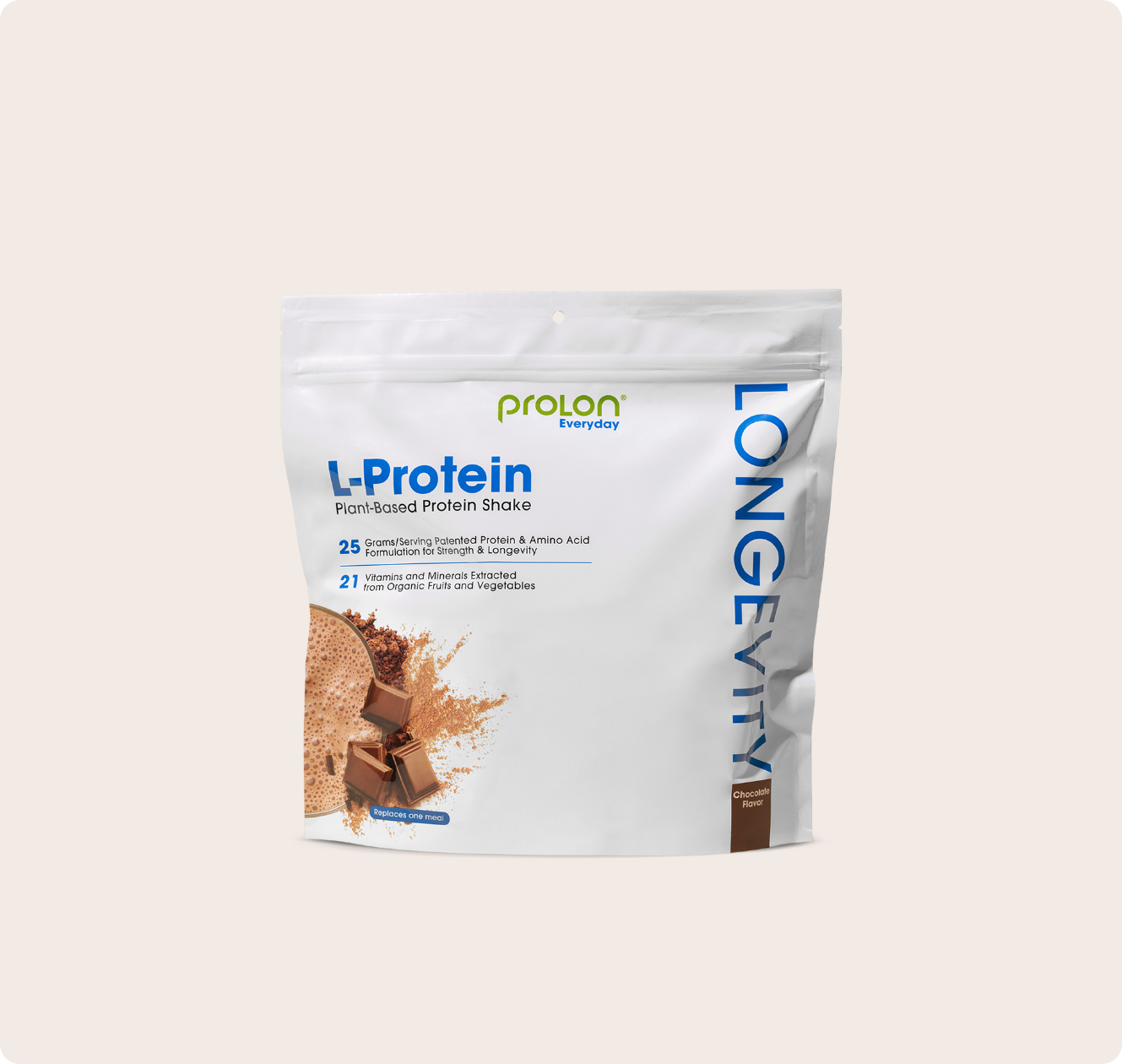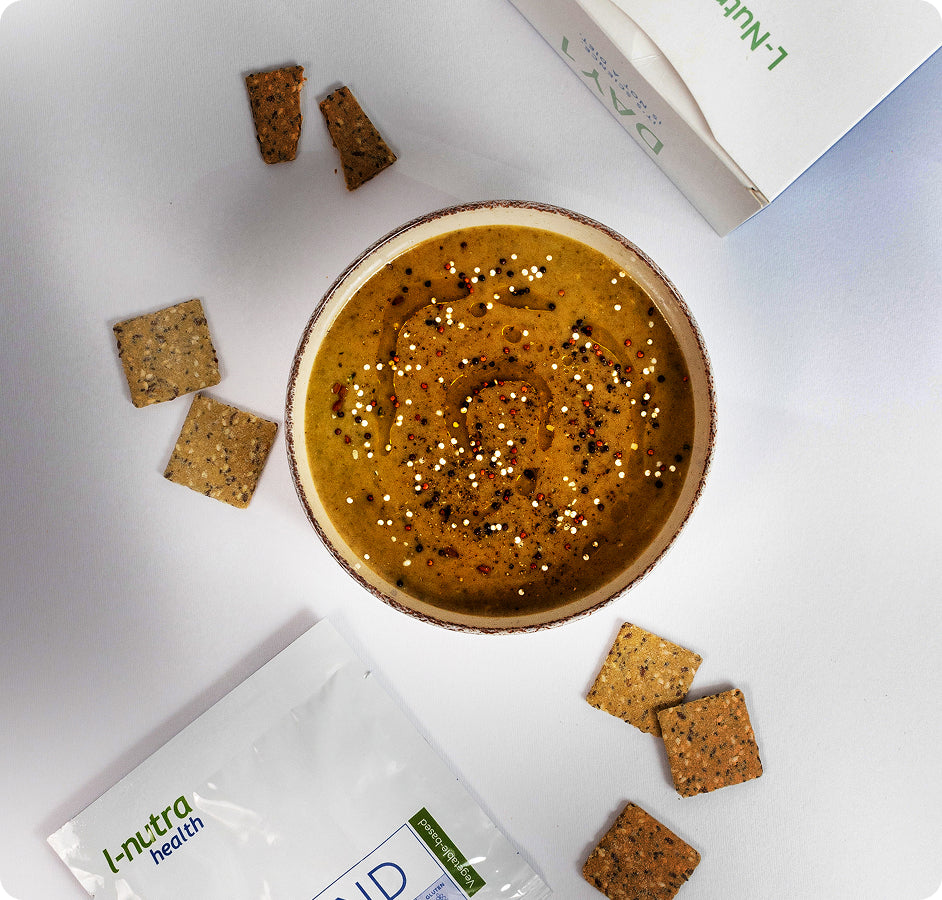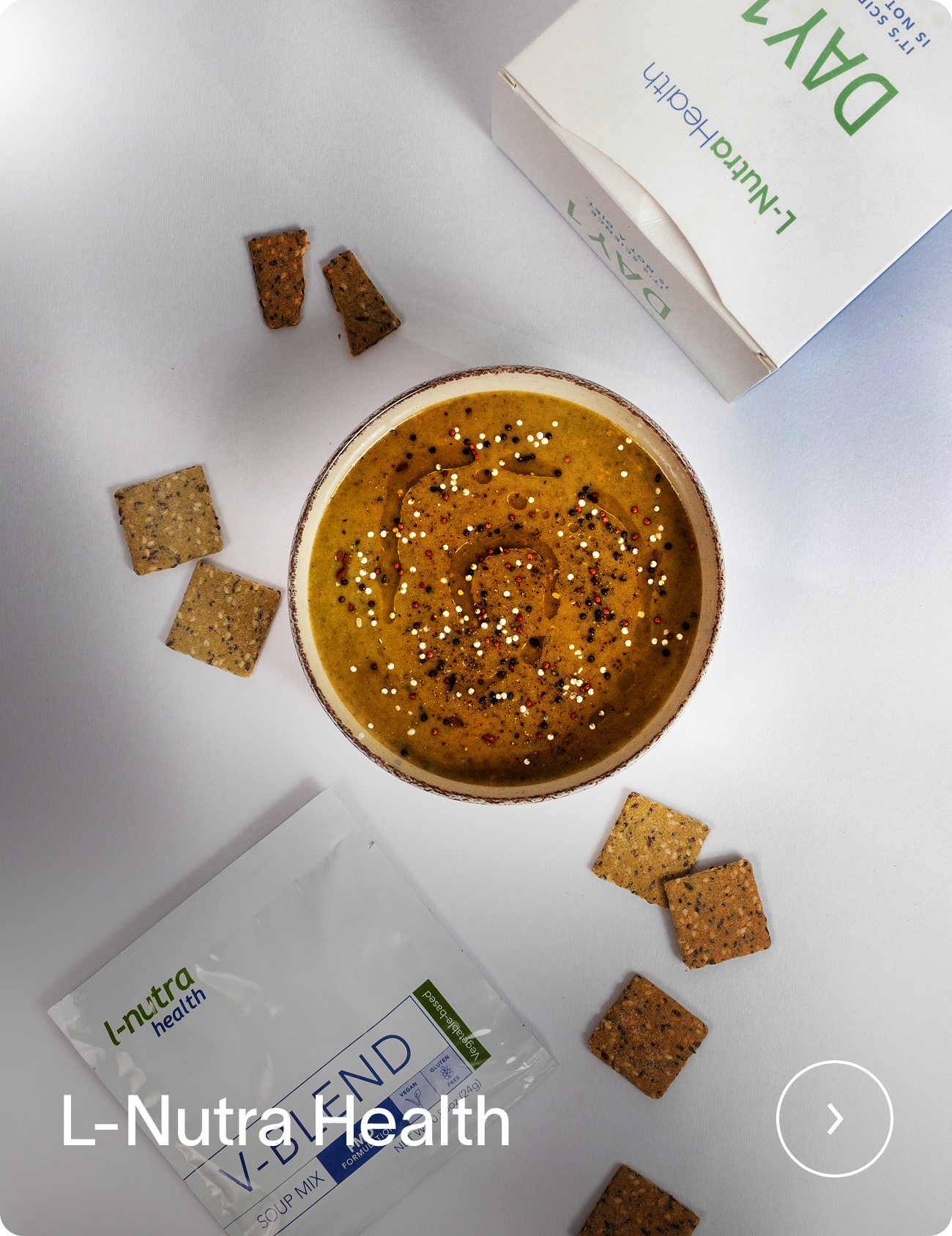Fasting is an ancient practice used across many societies, cultures, and religions… and it has been making a comeback. Why? More and more research shows fasting benefits the body in a multitude of ways, including possibly supporting longevity, enhancing metabolism, and reducing the risk of metabolic and cardiovascular conditions.
One particular type of fasting, intermittent fasting (IF) - specifically, Time Restricted Eating (TRE), where calories are consumed during specific eating windows and avoided during fasting periods - has been especially touted for its promotion of weight loss. While more restrictive IF patterns like 14:10 or 16:8, as discussed below, may help achieve short-term weight loss goals, they are not recommended for extended periods, as prolonged calorie restriction can lead to nutritional deficiencies and other health issues.
For a sustainable option, we recommend the 12:12 Circadian Time-Restricted Eating (TRE) pattern, as outlined in the Longevity Diet. This approach aligns with your body's natural circadian rhythms, limiting eating from sunrise to sundown (for example, 7am to 7pm). Longer, prolonged fasts, such as the Fasting Mimicking Diet (FMD), offer more significant and lasting benefits for metabolic health and longevity that cannot be achieved with IF alone.
In this blog, TRE is the type of intermittent fasting we are referring to; however, TRE is just one form of intermittent fasting. Other forms, like alternate day fasting, do not adhere to a daily eating window.
What Keeps You From Losing Weight?
Before understanding how IF can help you lose that stubborn belly fat, we need to understand the factors that influence our bodies’ ability to lose weight.
It’s important to note that certain metabolic conditions can make it more difficult for us to lose weight, even if we get plenty of physical activity and maintain healthy diets.
Insulin Resistance
When we eat, our bodies break food down into glucose. Glucose enters the bloodstream, raises blood sugar levels, and triggers the pancreas to release insulin. Insulin then carries glucose to the cells to be used for cellular energy.
In someone who is insulin resistant, the cells that need the glucose are resistant to receiving it. To compensate for this, your pancreas produces more insulin to try and overcome the resistance. This increased insulin production is known as hyperinsulinemia; as long as your pancreas can keep up with the demand, your blood sugar levels will remain within a normal range.
However, if your cells become too resistant to insulin, your pancreas may eventually become overworked. This can lead to persistently elevated blood sugar levels (hyperglycemia), which can increase your risk of developing prediabetes and type 2 diabetes. If you or a loved one is struggling with managing blood sugar or insulin levels, L-Nutra Health offers nutrition-based, dietitian-guided, comprehensive programs to address the root cause of such metabolic conditions.
Age
As we age, losing weight may become more challenging, and we may notice that body composition changes. For example, many women experience an increase in belly fat after menopause due to decreases in estrogen levels, which affects how and where fat is stored.
This difficulty in managing weight can also be driven by cellular aging—the wear and tear that occurs at the cellular level. Cellular aging contributes to biological age (which reflects how your body functions based vs. chronological age, the actual number of years you've lived), often accelerating issues like weight gain.
As cells age, they can impair insulin sensitivity, making it harder for the body to regulate blood sugar, leading to fat accumulation. At the same time, muscle mass naturally decreases with age, which slows metabolism. This decline in muscle mass lowers the resting metabolic rate (RMR)—the number of calories the body burns at rest—potentially contributing to weight gain and metabolic challenges.
How Can Intermittent Fasting Help You Lose Weight?
Intermittent fasting can help support weight loss goals by placing you in a calorie deficit (where the body consumes fewer calories than it burns).
During fasting periods, when the body isn’t receiving energy from food, it begins to break down stored fat into molecules called ketones, which can then be used as an alternative energy source - a process referred to as ketosis.
How Much Weight Can You Lose From Fasting?
Everyone’s body and health picture is different, and bodies respond differently to fasting. However, a systematic review of 40 studies with a high degree of variability found that intermittent fasting resulted in an average loss of between seven to 10 pounds over a 10-week period.
What Can Influence Weight Loss While You’re Fasting?
Anytime your body enters into a fasting period where fewer calories are being consumed, there are factors that still may affect your ability to lose weight.
-
Diet: Regardless of the type of fasting you choose, weight loss will be difficult if you're not consuming nutrient-dense, high-fiber foods and maintaining a lower daily calorie intake than your usual diet.
This can make fasting challenging, especially if you’re using a fasting method like alternate-day fasting, where you may eat a normal caloric intake one day and reduce your calories the next. If you are hungry from your fasting day, you might be inclined to over-consume calories on your non-fasting day.
-
Metabolism: As previously mentioned, metabolic health plays a role in how well your body is able to lose weight. If you suffer from a metabolic disease like type 2 diabetes, for instance, you may have a harder time losing weight.
Luckily, many types of fasting can support a healthy metabolism, but certain types of fasting, like IF, are better for your metabolic health than others.
-
Stress: When stress levels rise, so do cortisol levels. Cortisol can cause the accumulation of weight, especially in the midsection. Research shows that in the long-term, fasting may have a positive effect on cortisol levels.
- Medical Conditions: Anytime we consider weight loss, we have to consider it along with preexisting medical conditions that could impact our weight loss goals. Those with underlying conditions may have a harder time with weight loss than a person who does not.
When Do You Burn the Most Fat While Fasting?
Fasting changes the way the body burns fuel. Our bodies are designed to burn glucose first, then glycogen stores, and then fat. To reach this state, you typically need to fast for at least 12-16 hours.
What Are the Best Intermittent Fasting Schedules To Maximize Fat Loss?
Intermittent fasting includes periods of fasting and periods of eating. These periods can range from several hours to entire days. It’s important to distinguish that time-restricted eating (TRE), though the most common type, is not the only type of intermittent fasting. For example, while TRE is characterized by focusing on the time of meals, some IF plans involve non-consecutive days of fasting, like alternate-day fasting.
Two IF methods that are generally associated with weight loss include:
-
16:8 Method: With this method of intermittent fasting, a person will fast for 16 hours (effectively getting into the fat-burning window) and then consume calories during an 8-hour window. A study in 2023 found when combined with calorie restriction, this method of fasting is closely associated with weight loss and cardiometabolic support.
- 14:10 Method: Like the 16:8 method, the 14:10 method utilizes a 24-hour period of time-restricted eating. In this method, you’ll consume calories in a 10-hour window and fast for 14. This may be an easier way to approach an intermittent fasting schedule, especially for beginners.
These types of eating plans are only intended to be used for short-term goals and not recommended for long-term sustainability. Once you’ve hit your goal, it’s recommended you return to a 12:12 TRE circadian pattern as mentioned earlier.
Why You May Be Intermittent Fasting Wrong
Many people skip breakfast to extend their fast, and eat later in the day. However, this can increase the risk of health issues, such as heart-related death. Our bodies process nutrients better earlier when critical organs need them most; eating later disrupts natural circadian rhythms, affecting digestion, sleep, hormones, and metabolism. Even if you decide to follow a stricter time restricted eating pattern, opting to eat breakfast and finish eating earlier in the day is going to result in better overall health outcomes.
Whatever feeding window you choose, Prolon’s products help extend your fast while simultaneously providing nourishment. Fasting Bars and Fasting Shakes were formulated to avoid triggering the body's nutrient sensing pathways, keeping it in a fasting, fat-burning state. Use daily for breakfast, a meal or snack replacement, to extend an overnight fast, or as an after-dinner snack.
What To Do After Your Intermittent Fast To Continue the Benefits
As mentioned above, IF with windows larger than 12:12 is only intended for short periods of time. To continue with longer-term benefits, prolonged fasting (greater than 72 hours) is key.
During these types of fasts, the body begins to change on a cellular level, with cells entering a process called autophagy that cleans out and recycles old and damaged cells to help them function more efficiently. This type of fast may also help support healthy metabolic markers by maintaining insulin levels in the body needed to lose fat.
However, water-only prolonged fasting can cause side effects like dehydration, loss of muscle mass, and brain fog. Thankfully, it is possible to achieve the benefits of a prolonged fast without many of these side effects with Prolon’s 5-day Fasting Mimicking Diet (FMD).
The FMD provides the body with specific foods that keep it in a fasting state, allowing calorie and nutrient intake while potentially protecting against side effects like muscle loss and brain fog. By avoiding nutrient-sensing pathways, the body believes it’s fasting, offering the benefits of a prolonged fast without complete food deprivation.
The Longevity Diet
Another way to prioritize health goals and help maintain a healthy body weight is by using the Longevity Diet, which draws on years of research exploring the eating habits of those in Longevity Zones—regions where people live healthily into their 100s. This diet emphasizes an abundance of fresh foods coming from plant-based sources, operates on a 12:12 eating pattern, and focuses on ensuring our daily carbohydrate, protein, and fat consumption meets certain markers.
The Takeaway
There are many factors that might influence weight loss and the process of losing weight can be a complicated journey for some. However, IF can be used to not only lose weight but support a healthy metabolism and longevity.
For sustained weight loss and longevity benefits, Prolon’s FMD was designed to keep your body in a fasted state while still receiving nutrients and the benefits of a water-only fast. Try out Prolon’s 5-Day Program today to get started.
Sources:
- Belly fat in women: Taking — and keeping — it off | Mayo Clinic
- A Periodic Diet that Mimics Fasting Promotes Multi-System Regeneration, Enhanced Cognitive Performance, and Healthspan: Cell Metabolism | Cell.com
- Do intermittent diets provide physiological benefits over continuous diets for weight loss? A systematic review of clinical trials | NCBI
- Fasting-mimicking diet and markers/risk factors for aging, diabetes, cancer, and cardiovascular disease | NCBI
- Effects of Fasting and Glucose Load on Free Cortisol Responses to Stress and Nicotine* | The Journal of Clinical Endocrinology & Metabolism | Oxford Academic
- Time-restricted eating with calorie restriction on weight loss and cardiometabolic risk: a systematic review and meta-analysis | European Journal of Clinical Nutrition
- Daily Longevity Diet for Adults | Valter Longo



